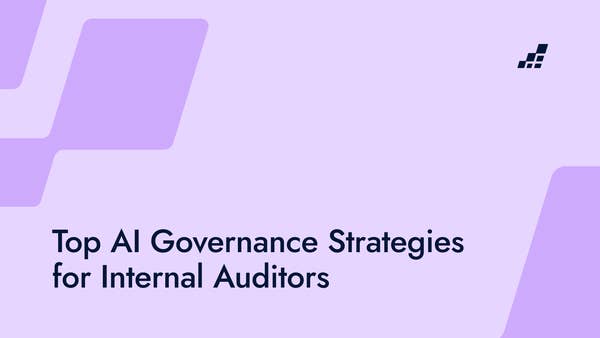- /
- Blog
A Simple 9-Step ESG Audit Checklist

Here is a clear nine-step checklist to guide you through the essentials of conducting an ESG audit.
Step 1: Understand the Basics of ESG Audits
Additionally, ESG audits are crucial for building stakeholder trust and meeting investor expectations, as ESG factors are increasingly important in investment decisions.
To do a solid ESG audit, you need a deep understanding of a company's operations, its impact on the environment and society, and its governance structures. Knowing these aspects will help you carry out an effective and thorough ESG audit.
Step 2: Inventory and Interview Your Stakeholders
Preparing for an ESG audit means letting stakeholders know about the audit, listening to their concerns, and explaining what to expect during the audit.
Educate stakeholders about ESG risks, data, and how these will be included in reports. Conduct interviews to get insights, concerns, and evidence about ESG performance. Ensure transparency and maintain ongoing communication with stakeholders throughout the ESG process to build trust and foster collaboration.
Step 3: Establish Your ESG Criteria
Decide which areas you'll focus on during the audit, tailored to your company's work and industry, covering all three parts of ESG: environmental, social, and governance.
Defining Environmental Criteria
When looking at the environment, think about checking energy use, waste management, and carbon footprint. Benchmark against industry standards and peers to set realistic and impactful criteria.
Look into how much resources your company uses, its emissions, and its sustainability practices to find ways to lessen its impact on the environment.
Defining Social Criteria
When it comes to social aspects, focus on factors such as labor practices, community engagement, and human rights. Evaluate how your company treats its employees, interacts with local communities, and ensures fairness and ethics throughout its supply chain.
Defining Governance Criteria
When it comes to governance, think about corporate ethics, transparency, and board diversity. Look closely at your company’s governance structures, policies, and practices to ensure they promote ethical behavior, accountability, and inclusivity throughout.
Step 4: Choose the Right ESG Guidance Framework(s)
Choosing the right framework is crucial to evaluate your ESG criteria effectively. Different frameworks offer various strengths, and selecting the right one depends on your company's industry, goals, and specific ESG focus areas.
There is no universally accepted framework or set of standards for measuring ESG performance. But here are three of the most established:
- Sustainability Accounting Standards Board (SASB): SASB provides sector-specific guidelines that help companies identify and report on ESG issues most relevant to their industry.
- Task Force on Climate-related Financial Disclosures (TCFD): TCFD focuses specifically on climate-related risks and opportunities, making it ideal for companies looking to improve their climate resilience and disclose climate-related financial impacts.
- Global Reporting Initiative (GRI): GRI offers comprehensive reporting standards that cover a broad range of ESG issues, making it suitable for companies seeking a holistic approach to sustainability reporting.
If a given framework does not meet your organization’s ESG reporting needs, developing a custom framework or using guidance from multiple frameworks may fit your company better.
Step 5: Conduct the ESG Audit
With your ESG criteria set, conduct the audit by evaluating your company's practices against these standards.
Collect as much data as possible through document reviews, staff interviews, and direct observations. Use both qualitative and quantitative data for a comprehensive audit.
Keep detailed records of your findings, which will be essential for analyzing results and developing improvement strategies.
Step 6: Analyze the Results and Identify Opportunities for Improvement
Analyze the audit results to identify patterns and trends. Highlight areas where your company performs well and where it could improve. Consider the broader context of your findings to align with sustainability goals and corporate values.
The analysis should aim to uncover opportunities for enhancing ESG performance. Involve cross-functional teams in the analysis to get diverse perspectives and more holistic solutions.
Step 7: Incorporate ESG Into Your Overarching Risk Management Plan
Integrate ESG risks and opportunities into your organization's risk management framework. Maintain a centralized risk register that includes ESG risks and adopt an Integrated Risk Management (IRM) approach to align ESG risk management with broader organizational risk strategies.
Monitor regulatory developments to anticipate new ESG reporting requirements and integrate them proactively. Regularly update and review the risk management plan to adapt to changing ESG risks and opportunities.
Step 8: Determine Which Compliance Requirements Overlap With ESG
Identify existing compliance requirements that relate to ESG, such as Sarbanes-Oxley (SOX) for financial reporting and ISO standards for environmental and occupational health and safety management.
Consolidate ESG-related controls and reporting requirements into existing compliance frameworks to avoid redundancy. Streamlined reporting processes can reduce administrative burdens and improve efficiency.
Step 9: Implement Changes and Monitor Progress
Implement changes based on your findings and monitor progress regularly. Keep your employees informed and involved to ensure buy-in and a smooth transition. Set up processes to verify the accuracy, completeness, and transparency of ESG data reported.
Stay updated on regulatory changes and emerging ESG reporting standards and regulations worldwide. Emphasize continuous improvement and adaptability to new ESG standards and practices.
Conclusion
By following this comprehensive ESG audit checklist, you're already on the path to improving your company’s sustainability and social responsibility efforts. But ESG is a continuous journey, and to truly stay ahead, you need deeper insights and smarter strategies tailored to the evolving business landscape.
Ready to unlock the full potential of ESG audits? Download our exclusive whitepaper, Auditors in the Dark: ESG in a New Light, and discover how technology is transforming ESG practices. Learn practical tips, explore real-world challenges, and see how forward-thinking companies are using innovative platforms to meet—and exceed—global sustainability goals.
Download the whitepaper now and bring your ESG strategy into the light!


.png?width=600&quality=70&format=auto&crop=16%3A9)
